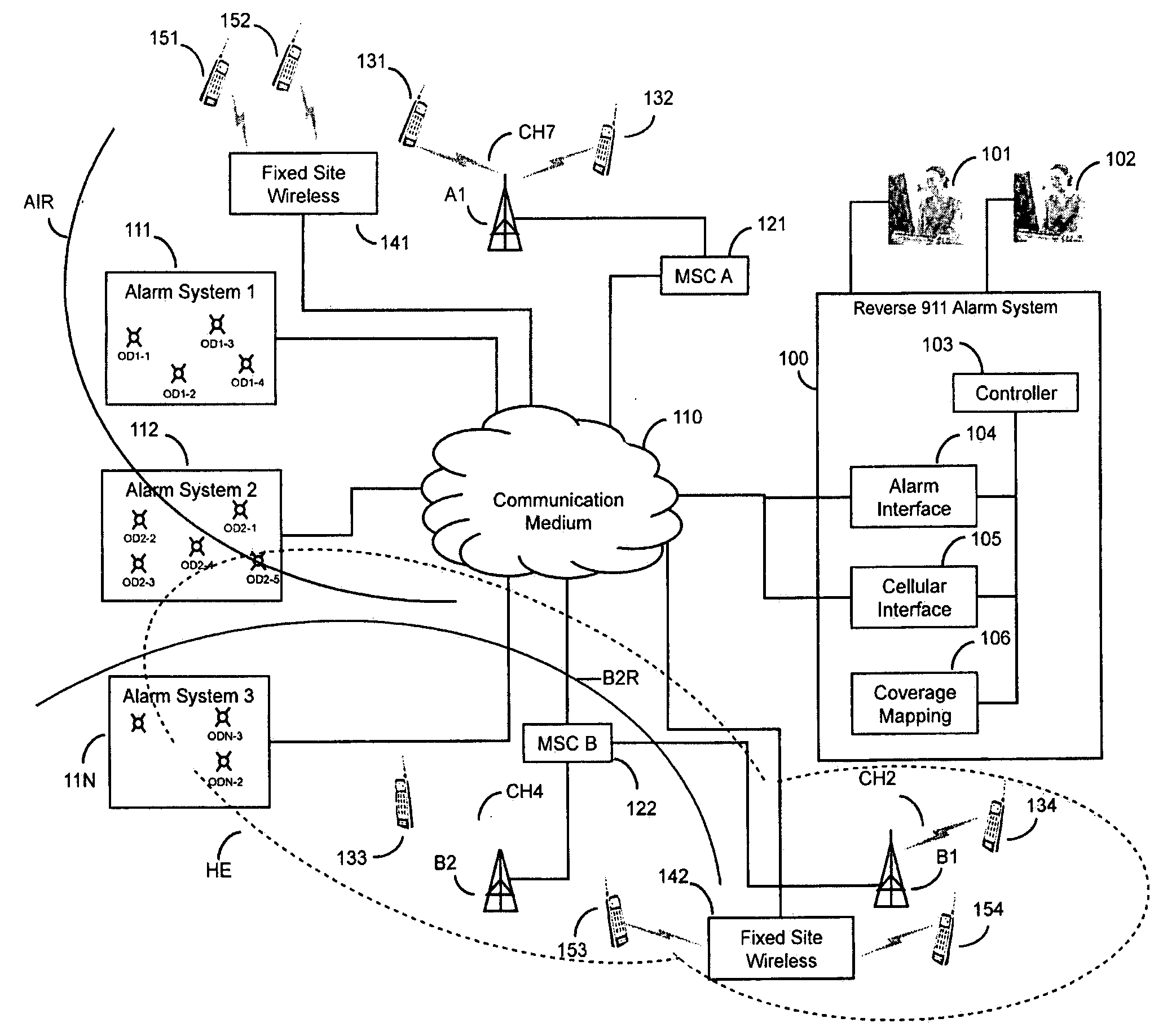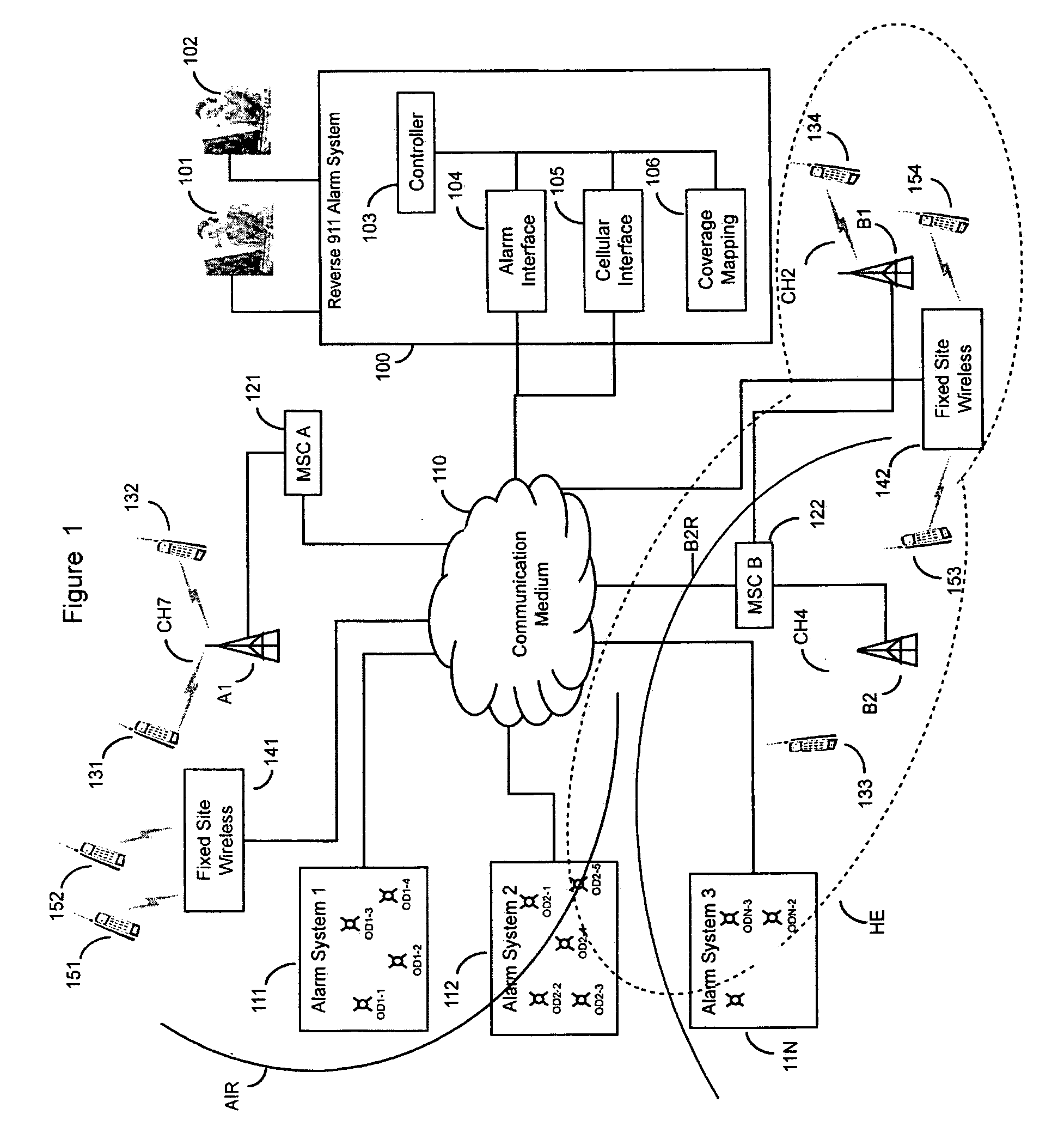System for controlling the operation of wireless multicasting systems to distribute an alarm indication to a dynamically configured coverage area
a wireless multicasting and alarm indication technology, applied in the direction of broadcast service distribution, signalling system, connection management, etc., can solve the problems of inability to benefit from the alarm indications produced by the reverse 911 alarm system, existing alarm system is inadequate to properly warn individuals located in the affected area, and existing 911 and reverse 911 systems are not integrally coordinated
- Summary
- Abstract
- Description
- Claims
- Application Information
AI Technical Summary
Benefits of technology
Problems solved by technology
Method used
Image
Examples
Embodiment Construction
[0017]There are numerous hazards that can be threatening to the occupants of a dwelling (to include but not limited to a factory, office, commercial establishment, public building, or school campus) or those present in a predetermined locale. Autonomous alarm devices are available to detect the presence of a predetermined level, concentration, or intensity of the hazard and automatically generate an alarm indication, such as a loud sound, to alert the individuals in the vicinity of the alarm device of the presence of the hazard.
[0018]Alarm systems, such as those described in U.S. Pat. No. 7,301,455 and a US Application titled “Self-Configuring Emergency Event Alarm System With Autonomous Output Devices” filed on the same date as the present application, typically include multiple alarm devices and the associated output devices, each of which generates human sensible alarm indications in response to the receipt of an alarm indication. The output devices can be integrated into the ala...
PUM
 Login to View More
Login to View More Abstract
Description
Claims
Application Information
 Login to View More
Login to View More - R&D
- Intellectual Property
- Life Sciences
- Materials
- Tech Scout
- Unparalleled Data Quality
- Higher Quality Content
- 60% Fewer Hallucinations
Browse by: Latest US Patents, China's latest patents, Technical Efficacy Thesaurus, Application Domain, Technology Topic, Popular Technical Reports.
© 2025 PatSnap. All rights reserved.Legal|Privacy policy|Modern Slavery Act Transparency Statement|Sitemap|About US| Contact US: help@patsnap.com



